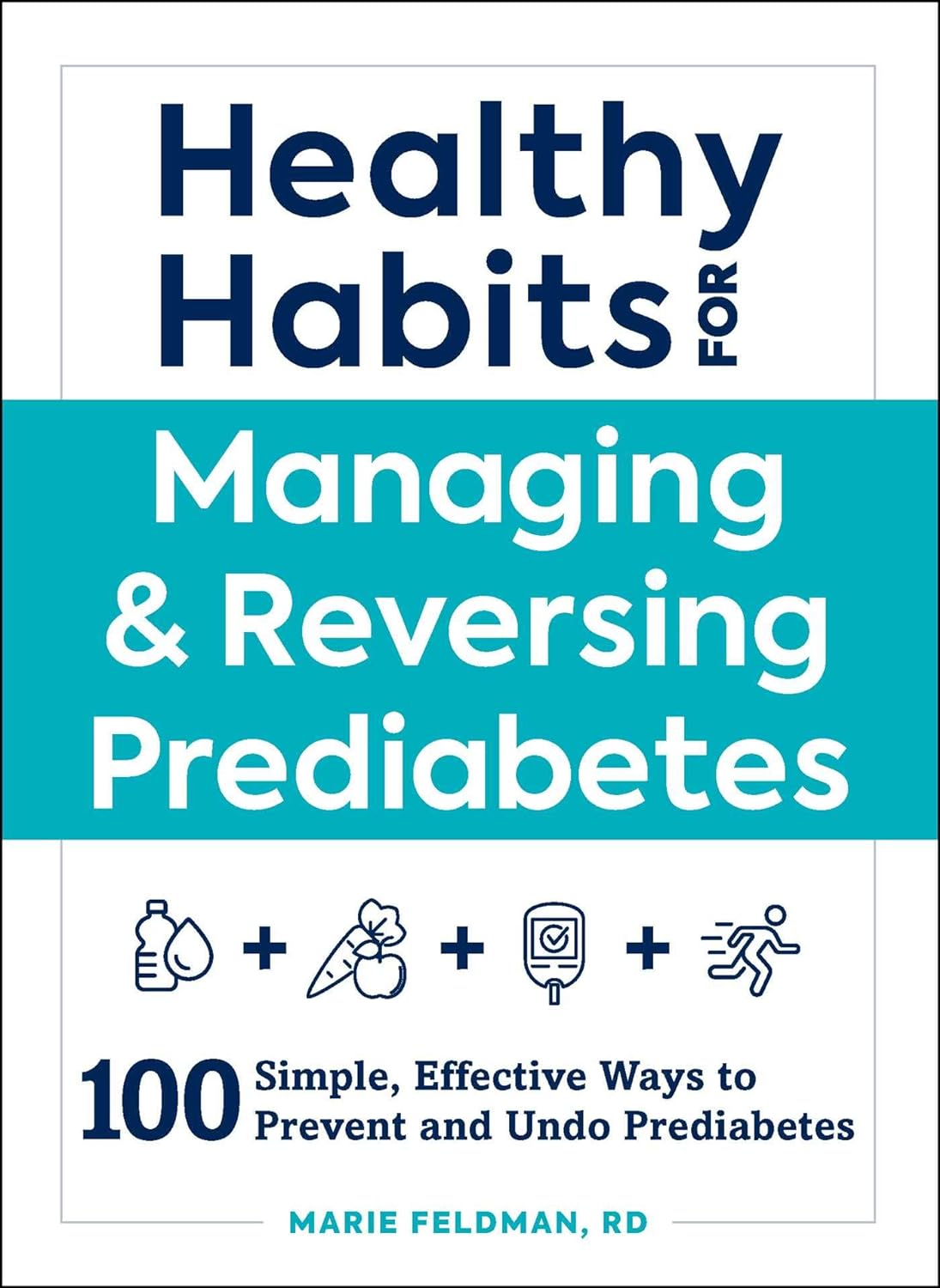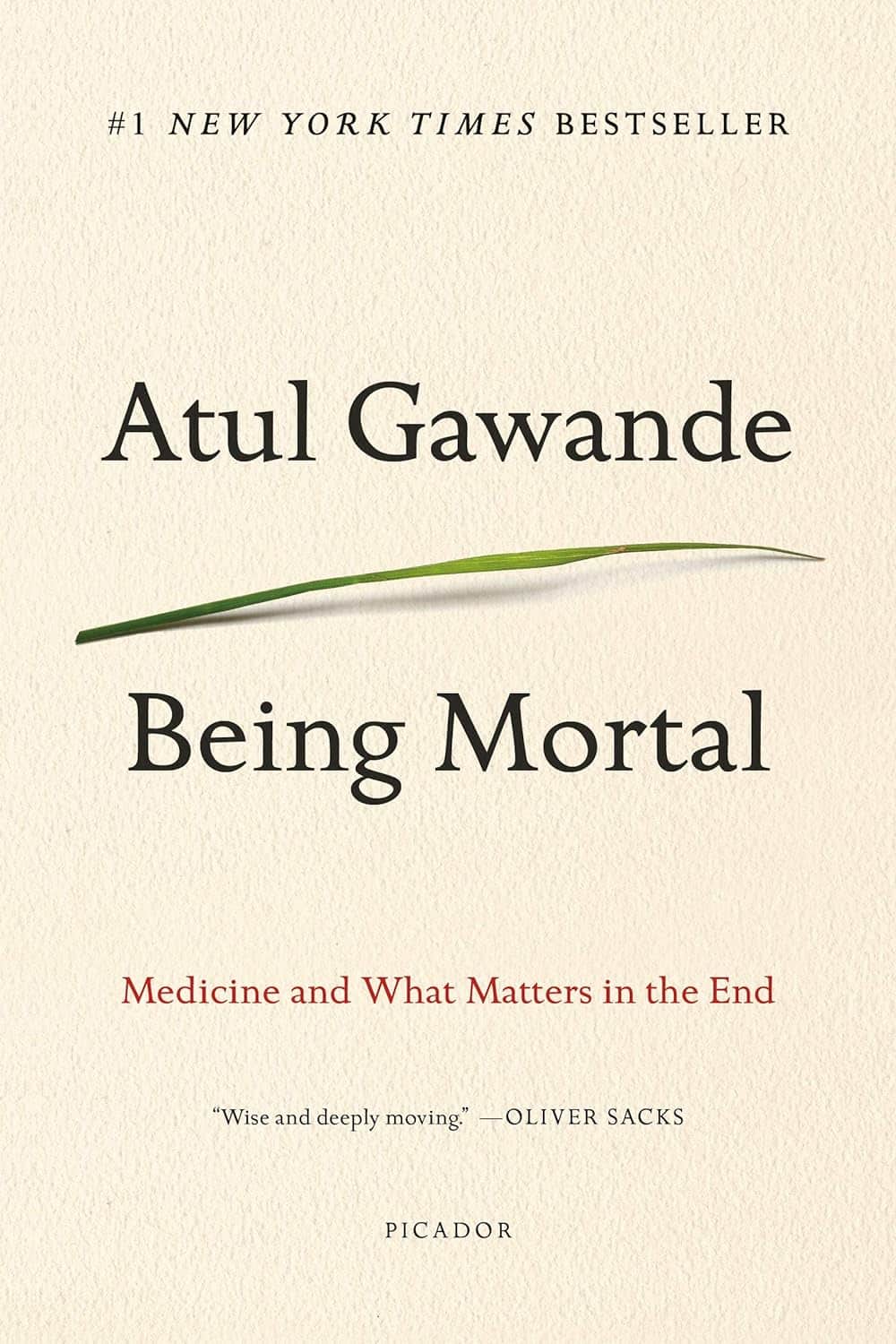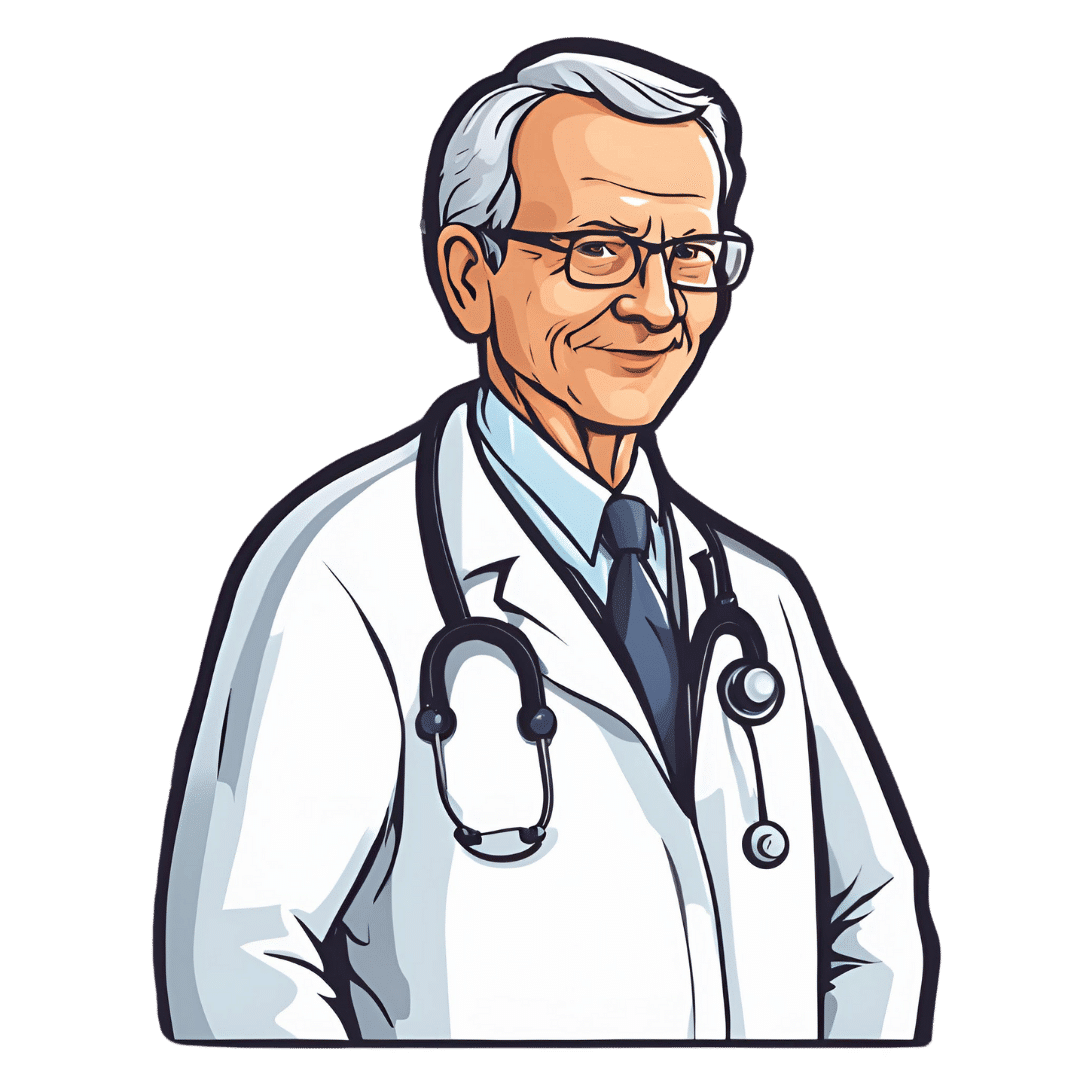
Lower Your Cortisol! (Here’s Why & How)
10almonds is reader-supported. We may, at no cost to you, receive a portion of sales if you purchase a product through a link in this article.
Cortisol, or “the stress hormone” to its friends, is produced by your adrenal glands, and is generally considered “not fun”.
It does serve a purpose, of course, just like almost everything else our body does. It serves as part of the “fight or flight” response, for example, and helps you to wake up in the morning.
While you do need some cortisol (and a small percentage of people have too little), most of us have too much.
Why? Simply put, modern life is not what 200,000* years of human evolution prepared us for:
- Agriculture (which allowed us to settle down and cease being nomadic) happened during the last 6% of those 200,000 years.
- The Industrial Revolution and the onset of modern capitalism happened during only during the last 0.1% of those 200,000 years.
*the 200,000 years figure is conservative and doesn’t take into account the 200,000,000 years of pre-hominid mammalian evolution. Doing so, on the basis of the mammalian brain & physiology being what’s important here, means our modern stressors have been around for <0.0001% of the time we have.
So guess what, our bodies haven’t caught up. As far as our bodies are concerned, we are supposed to be enjoying the sunshine of grassy plains and the shade of woodland while eating fruit.
- When the alarm clock goes off, our body panics and prepares us to either flee or help fight the predator, because why else would we have been woken so?
- When we have a pressing deadline for work, our brain processes this as “if we don’t do this, we will literally starve and die”.
- When people are upset or angry with us, there’s a part of our brain that fears exile from the tribe and resultant death.
…and so on.
Health Risks of High Cortisol
The long-term stressors are the biggest issue for health. Unless you have a heart condition or other relevant health problem, almost anyone can weather a brief unpleasant surprise. But if something persists? That prompts the body to try to protect you, bless it. The body’s attempts backfire, because…
- One way it does this by making sure to save as much food as possible in the form of body fat
- It’ll also increase your appetite, to make sure you eat anything you can while you still can
- It additionally tries to protect you by keeping you on the brink of fight-or-flight readiness, e.g:
- High blood pressure
- High blood sugar levels
- Rapid mood changes—gotta be able to do those heel-turns as necessary and react quickly to any possible threat!
Suffice it to say, these things are not good for your long-term health.
That’s the “Why”—now here’s the “How”:
Lowering your cortisol levels mostly means lowering your stress and/or lowering your stress response. We previously gave some powerful tools for lowering anxiety, which for these purposes amounts to the same thing.
However, we can also make nutritional and lifestyle changes that will reduce our cortisol levels, for example:
- Reduce (ideally: eliminate from your lifestyle) caffeine
- Reduce (ideally: eliminate from your lifestyle) alcohol
- Yes, really. While many understandably turn to alcohol specifically to help manage stress, it only makes it worse long-term.
- Additionally, alcohol directly stimulates cortisol production, counterintuitive as that may be.
Read: Alcohol, Aging, and the Stress Response ← full article (with 37 sources of its own) from the NYMC covering how alcohol stimulates cortisol production and what that means for us
As well as reductions/eliminations, are some things you can add into your lifestyle that will help!
We’ve written previously about some:
Read: Ashwagandha / Read: L-Theanine / Read: CBD Oil
Other things include, no surprises here:
- The Mediterranean diet (nutritious and delicious): https://10almonds.com/mediterranean-diet
- Get 7–9 hours (good quality!) sleep per night: https://10almonds.com/time-pillow-talk
- Get regular exercise (the regularity matters most!): https://10almonds.com/keep-on-keeping-on
Progressive Relaxation
We’ll give this one its own section because we’ve not talked about it before. Maybe you’re familiar. If not, then in a nutshell: progressive relaxation means progressively tensing and then relaxing each part of your body in turn.
Why does this work? Part of it is just a physical trick involving biofeedback and the natural function of muscles to contract and relax in turn, but the other part is even cleverer:
It basically tricks the most primitive part of your brain, the limbic system, into thinking you had a fight and won, telling it “thank you very much for the cortisol but we don’t need it anymore”.
Take a Hike! Or a Stroll… You Do You!
Last but not least: go connect with your roots. Spend time in the park, or at least the garden. Have a picnic, if the weather suits. Go somewhere you can spend time around leafy green things under a blue sky (we realize the blue sky may be subject to availability in some locations, but do what you can!).
Remember also: just as your body’s responses will be tricked by the alarm clock or the housework, they will also be easily tricked by blue and green stuff around you. If a sunny garden isn’t available in your location, a picture of one as your desktop background is the next best thing.
Don’t Forget…
Did you arrive here from our newsletter? Don’t forget to return to the email to continue learning!
Recommended
Learn to Age Gracefully
Join the 98k+ American women taking control of their health & aging with our 100% free (and fun!) daily emails:

Too Much Or Too Little Testosterone?
10almonds is reader-supported. We may, at no cost to you, receive a portion of sales if you purchase a product through a link in this article.
One Man’s Saw Palmetto Is Another Woman’s Serenoa Repens…
Today we’re going to look at saw palmetto. So, first:
What is it?
Saw palmetto is a type of palm native to the southeastern United States. Its scientific name is “Serenoa repens”, so if that name appears in studies we cite, it’s the same thing. By whichever name, it’s widely enjoyed as a herbal supplement.
Why do people take it?
Here’s where it gets interesting, because people take it for some completely opposite reasons…
Indeed, searching for it on the Internet will cause Google to suggest “…for men” and “…for women” as the top suggestions.
That’s because it works on testosterone, and testosterone can be a bit of a double-edged sword, so some people want to increase or decrease certain testosterone-related effects on their body.
And it works for both! Here be science:
- Testosterone (henceforth, “T”) is produced in the human body.
- Yes, all human bodies, to some extent.
- An enzyme called 5-alpha-reductase converts T in to DHT (dihydrogen testosterone)
- DHT is a much more potent androgen (masculinizing agent) than T alone, such that its effects are often unwanted, including:
- Enlarged prostate (if you have one)
- Hair loss (especially in men)
- New facial hair growth (usually unwanted by women)
- Women are more likely to get this due to PCOS and/or the menopause
To avoid those effects, you really want less of your T to be converted into DHT.
Saw palmetto is a 5α-reductase inhibitor, so if you take it, you’ll have less DHT, and you’ll consequently lose less hair, have fewer prostate problems, etc.
^The above study showed that saw palmetto extract performed comparably to finasteride. Finasteride is the world’s main go-to prescription drug for treating enlarged prostate and/or hair loss.
See also: Natural Hair Supplement: Friend or Foe? Saw Palmetto, a Systematic Review in Alopecia
Hair today… Growing tomorrow!
So, what was that about increasing T levels?
Men usually suffer declining T levels as they get older, with a marked drop around the age of 45. With lower T comes lower energy, lower mood, lower libido, erectile dysfunction, etc.
Guess what… It’s T that’s needed for those things, not DHT. So if you block the conversion of T to DHT, you’ll have higher blood serum T levels, higher energy, higher mood, higher libido, and all that.
(the above assumes you have testicles, without which, your T levels will certainly not increase)
Saw Palmetto Against Enlarged Prostate?
With higher DHT levels in mid-late life, prostate enlargement (benign prostatic hyperlasia) can become a problem for many men. The size of that problem ranges from urinary inconvenience (common, when the prostate presses against the bladder) to prostate cancer (less common, much more serious). Saw palmetto, like other 5α-reductase inhibitors such as finasteride, may be used to prevent or treat this.
Wondering how safe/reliable it is? We found a very high-quality fifteen-year longitudinal observational study of the use of saw palmetto, and it found:
❝The 15 years’ study results suggest that taking S. repens plant extract continuously at a daily dose of 320 mg is an effective and safe way to prevent the progression of benign prostatic hyperplasia.❞
Want a second opinion? We also found a 10-year study (by different researchers with different people taking it), which reached the same conclusion:
❝The results of study showed the absence of progression, both on subjective criteria (IPSS, and QoL scores), and objective criteria (prostate volume, the rate of urination, residual urine volume). Furthermore, patients had no undesirable effects directly related to the use of this drug.❞
- IPSS = International Prostate Symptom Score
- QoL = Quality of Life
❝But wait a minute; I, a man over the age of 45 with potentially declining T levels but a fabulous beard, remember that you said just a minute ago that saw palmetto is used by women to avoid having facial hair; I don’t want to lose mine!❞
You won’t. Once your facial hair follicles were fully developed and activated during puberty, they’ll carry on doing what they do for life. That’s no longer regulated by hormones once they’re up and running.
The use of saw palmetto can only be used to limit facial hair if caught early—so it’s more useful at the onset of menopause, for those who have (or will have) such, or else upon the arrival of PCOS symptoms or hirsuitism from some other cause.
Take The Test!
Do you have a prostate, and would like to know your IPSS score, and what that means for your prostate health?
(takes 1 minute, no need to pee or go probing for anything)
Bottom Line on Saw Palmetto
- It blocks the conversion of T into DHT
- It will increase blood serum T levels, thus boosting mood, energy, libido, etc in men (who typically have more T, but whose T levels decline with age)
- It will decrease DHT levels, thus limiting hair loss (especially in men) and later-life new facial hair growth (especially in women).
- It can be used to prevent or treat prostate enlargement
- Bonus: it’s a potent antioxidant and thus reduces general inflammation (in everyone)
Want To Try Saw Palmetto?
We don’t sell it (or anything else), but for your convenience…
Share This Post
- Testosterone (henceforth, “T”) is produced in the human body.

Driving under the influence of marijuana: An explainer and research roundup
10almonds is reader-supported. We may, at no cost to you, receive a portion of sales if you purchase a product through a link in this article.
Update 1: On May 16, 2024, the U.S. Department of Justice sent a proposed rule to the Federal Register to downgrade marijuana from a Schedule I to a Schedule III drug. This is the first step in a lengthy approval process that starts with a 60-day comment period.
Update 2: Two recent research studies were added to the “Studies on marijuana and driving” section of this piece on July 18, 2024.
As marijuana use continues to rise and state-level marijuana legalization sweeps the U.S., researchers and policymakers are grappling with a growing public safety concern: marijuana-impaired driving.
As of April 2023, 38 U.S. states had legalized medical marijuana and 23 had legalized its recreational use, according to the National Conference of State Legislatures. Recreational or medical marijuana measures are on the ballot in seven states this year.
The issue of marijuana-impaired driving has not been an easy one to tackle because, unlike alcohol, which has well-established thresholds of impairment, the metrics for marijuana’s effects on driving remain rather elusive.
“We don’t have that kind of deep knowledge right now and it’s not because of lack of trying,” says Dr. Guohua Li, professor of epidemiology and the founding director of the Center for Injury Science and Prevention at Columbia University.
“Marijuana is very different from alcohol in important ways,” says Li, who has published several studies on marijuana and driving. “And one of them is that the effect of marijuana on cognitive functions and behaviors is much more unpredictable than alcohol. In general, alcohol is a depressant drug. But marijuana could act on the central nervous system as a depressant, a stimulant, and a hallucinogenic substance.”
Efforts to create a breathalyzer to measure the level of THC, the main psychoactive compound found in the marijuana plant, have largely failed, because “the THC molecule is much bigger than ethanol and its behavior after ingestion is very different from alcohol,” Li says.
Currently, the two most common methods used to measure THC concentration to identify impaired drivers are blood and saliva tests, although there’s ongoing debate about their reliability.
Marijuana, a term interchangeably used with cannabis, is the most commonly used federally illegal drug in the U.S.: 48.2 million people, or about 18% of Americans reported using it at least once in 2019, according to the latest available data from the Centers for Disease Control and Prevention. Worldwide, 2.5% of the population consumes marijuana, according to the World Health Organization.
Marijuana is legal in several countries, including Canada, where it was legalized in 2018. Despite state laws legalizing cannabis, it remains illegal at the federal level in the U.S.
As states grapple with the contentious issue of marijuana legalization, the debate is not just about public health, potential tax revenues and economic interests. At the heart of the discussion is also the U.S. criminal justice system.
Marijuana is shown to have medicinal qualities and, compared with substances like alcohol, tobacco, and opioids, it has relatively milder health risks. However, it’s not risk-free, a large body of research has shown.
Marijuana consumption can lead to immediate effects such as impaired muscle coordination and paranoia, as well as longer-term effects on mental health and cognitive functions — and addiction. As its use becomes more widespread, researchers are trying to better understand the potential hazards of marijuana, particularly for younger users whose brains are in critical stages of development.
Marijuana and driving
The use of marijuana among drivers, passengers and pedestrians has increased steadily over the past two decades, Li says.
Compared with the year 2000, the proportion of U.S. drivers on the road who are under the influence of marijuana has increased by several folds, between five to 10 times, based on toxicology testing of people who died in car crashes, Li says.
A 2022 report from the National Transportation Safety Board finds alcohol and cannabis are the two most commonly detected drugs among drivers arrested for impaired driving and fatally injured drivers. Most drivers who tested positive for cannabis also tested positive for another potentially impairing drug.
“Although cannabis and many other drugs have been shown to impair driving performance and are associated with increased crash risk, there is evidence that, relative to alcohol, awareness about the potential dangers of driving after using other drugs is lower,” according to the report.
Indeed, many U.S. adults perceive daily marijuana use or exposure to its smoke safer than tobacco, even though research finds otherwise.
Several studies have demonstrated marijuana’s impact on driving.
Marijuana use can reduce the drivers’ ability to pay attention, particularly when they are performing multiple tasks, research finds. It also slows reaction time and can impair coordination.
“The combination is that you potentially have people who are noticing hazards later, braking slower and potentially not even noticing hazards because of their inability to focus on competing things on the road,” says Dr. Daniel Myran, an assistant professor at the Department of Family Medicine and health services researcher at the University of Ottawa.
In a study published in September in JAMA Network Open, Myran and colleagues find that from 2010 to 2021 the rate of cannabis-involved traffic injuries that led to emergency department visits in Ontario, Canada, increased by 475%, from 0.18 per 1,000 traffic injury emergency department visits in 2010 to 1.01 visits in 2021.
To be sure, cannabis-involved traffic injuries made up a small fraction of all traffic injury-related visits to hospital emergency departments. Out of 947,604 traffic injury emergency department visits, 426 had documented cannabis involvement.
Myran cautions the increase shouldn’t be solely attributed to marijuana legalization. It captures changing societal attitudes toward marijuana and acceptance of cannabis use over time in the lead-up to legalization. In addition, it may reflect an increasing awareness among health care providers about cannabis-impaired driving, and they may be more likely to ask about cannabis use and document it in medical charts, he says.
“When you look at the 475% increase in cannabis involvement in traffic injuries, rather than saying legalizing cannabis has caused the roads to be unsafe and is a public health disaster, it’s that cannabis use appears to be growing as a risk for road traffic injuries and that there seem to be more cannabis impaired drivers on the road,” Myran says. “Legalization may have accelerated this trend. Faced with this increase, we need to think about what are public health measures and different policy interventions to reduce harms from cannabis-impaired driving.”
Setting a legal limit for marijuana-impaired driving
Setting a legal limit for marijuana-impaired driving has not been easy. Countries like Canada and some U.S. states have agreed upon a certain level of THC in blood, usually between 1 to 5 nanograms per milliliter. Still, some studies have found those limits to be weak indicators of cannabis-impaired driving.
When Canada legalized recreational marijuana in 2018, it also passed a law that made it illegal to drive with blood THC levels of more than 2 nanograms. The penalties are more severe for blood THC levels above 5 nanograms. The blood test is done at the police station for people who are pulled over and are deemed to be drug impaired.
In the U.S., five states — Ohio, Illinois, Montana, Washington and Nevada — have “per se laws,” which set a specific amount of THC in the driver’s blood as evidence of impaired driving, according to the National Conference of State Legislatures. That limit ranges between 2 and 5 nanograms of THC per milliliter of blood.
Colorado, meanwhile, has a “permissible inference law,” which states that it’s permissible to assume the driver was under the influence if their blood THC level is 5 nanograms per milliliter or higher, according to NCSL.
Twelve states, most which have legalized some form of marijuana of use, have zero tolerance laws for any amount of certain drugs, including THC, in the body.
The remaining states have “driving under the influence of drugs” laws. Among those states, Alabama and Michigan, have oral fluid roadside testing program to screen drivers for marijuana and other drugs, according to NCSL.
In May this year, the U.S. Department of Transportation published a final rule that allows employers to use saliva testing for commercially licensed drivers, including truck drivers. The rule, which went into effect in June, sets the THC limit in saliva at 4 nanograms.
Saliva tests can detect THC for 8 to 24 hours after use, but the tests are not perfect and can results in false positives, leading some scientists to argue against using them in randomly-selected drivers.
In a 2021 report, the U.S. National Institute of Justice, the research and development arm of the Department of Justice, concluded that THC levels in bodily fluids, including blood and saliva “were not reliable indicators of marijuana intoxication.”
Studies on marijuana and driving
Over the past two decades, many studies have shown marijuana use can impair driving. However, discussions about what’s the best way to measure the level of THC in blood or saliva are ongoing. Below, we highlight and summarize several recent studies that address the issue. The studies are listed in order of publication date. We also include a list of related studies and resources to inform your audiences.
State Driving Under the Influence of Drugs Laws
Alexandra N. Origenes, Sarah A. White, Emma E. McGinty and Jon S. Vernick. Journal of Law, Medicine & Ethics, July 2024.Summary: As of January 2023, 33 states and D.C. had a driving under the influence of drugs law for at least one drug other than cannabis. Of those, 29 states and D.C. had a law specifically for driving under the influence of cannabis, in addition to a law for driving under the influence of other drugs. Four states had a driving under the influence of drug laws, excluding cannabis. Meanwhile, 17 states had no law for driving under the influence of drugs, including cannabis. “The 17 states lacking a DUID law that names specific drugs should consider enacting such a law. These states already have expressed their concern — through legislation — with drug-impaired driving. However, failure to name specific drugs is likely to make the laws more difficult to enforce. These laws may force courts and/or law enforcement to rely on potentially subjective indicators of impairment,” the authors write.
Associations between Adolescent Marijuana Use, Driving After Marijuana Use and Recreational Retail Sale in Colorado, USA
Lucas M. Neuroth, et al. Substance Use & Misuse, October 2023.Summary: Researchers use data from four waves (2013, 2015, 2017 and 2019) of the Healthy Kids Colorado Survey, including 47,518 students 15 and older who indicated that they drove. They find 20.3% of students said that they had used marijuana in the past month and 10.5% said they had driven under the influence of marijuana. They find that the availability of recreational marijuana in stores was associated with an increased prevalence of using marijuana one to two times in the past month and driving under the influence of marijuana at least once. “Over the study period, one in ten high school age drivers engaged in [driving after marijuana use], which is concerning given the high risk of motor vehicle-related injury and death arising from impaired driving among adolescents,” the authors write.
Are Blood and Oral Fluid Δ9-tetrahydrocannabinol (THC) and Metabolite Concentrations Related to Impairment? A Meta-Regression Analysis
Danielle McCartney, et al. Neuroscience & Biobehavioral Reviews, March 2022.Summary: Commonly used THC measurements may not be strong indicators of driving impairment. While there is a relationship between certain biomarkers like blood THC concentrations and impaired driving, this correlation is often weak. The study underscores the need for more nuanced and comprehensive research on this topic, especially as cannabis usage becomes more widespread and legally accepted.
The Effects of Cannabis and Alcohol on Driving Performance and Driver Behaviour: A Systematic Review and Meta-Analysis
Sarah M. Simmons, Jeff K. Caird, Frances Sterzer and Mark Asbridge. Addiction, January 2022.Summary: This meta-analysis of experimental driving studies, including driving simulations, confirms that cannabis impairs driving performance, contrary to some beliefs that it might enhance driving abilities. Cannabis affects lateral control and speed — typically increasing lane excursions while reducing speed. The combination of alcohol and marijuana appears worse than either alone, challenging the idea that they cancel each other out.
Cannabis Legalization and Detection of Tetrahydrocannabinol in Injured Drivers
Jeffrey R. Brubacher, et al. The New England Journal of Medicine, January 2022.Summary: Following the legalization of recreational marijuana in Canada, there was a notable increase in injured drivers testing positive for THC, especially among those 50 years of age or older. This rise in cannabis-related driving incidents occurred even with new traffic laws aiming to deter cannabis-impaired driving. This uptick began before legalization became official, possibly due to perceptions that cannabis use was soon-to-be legal or illegal but not enforced. The data suggests that while legalization has broad societal impacts, more comprehensive strategies are needed to deter driving under the influence of cannabis and raise public awareness about its risks.
Cannabis and Driving
Godfrey D. Pearlson, Michael C. Stevens and Deepak Cyril D’Souza. Frontiers in Psychiatry, September 2021.Summary: Cannabis-impaired driving is a growing public health concern, and studies show that such drivers are more likely to be involved in car crashes, according to this review paper. Drivers are less affected by cannabis than they are by alcohol or cocaine, but the problem is expected to escalate with increasing cannabis legalization and use. Unlike alcohol, THC’s properties make it challenging to determine direct impairment levels from testing results. Current roadside tests lack precision in detecting genuine cannabis-impaired drivers, leading to potential wrongful convictions. Moreover, there is a pressing need for research on the combined effects of alcohol and cannabis on driving, as well as the impact of emerging popular forms of cannabis, like concentrates and edibles. The authors recommend public awareness campaigns about the dangers of driving under the influence of cannabis, similar to those against drunk driving, to address misconceptions. Policymakers should prioritize science-based decisions and encourage further research in this domain.
Demographic And Policy-Based Differences in Behaviors And Attitudes Towards Driving After Marijuana Use: An Analysis of the 2013–2017 Traffic Safety Culture Index
Marco H. Benedetti, et al. BMC Research Notes, June 2021.Summary: The study, based on a U.S. survey, finds younger, low-income, low-education and male participants were more tolerant of driving after marijuana consumption. Notably, those in states that legalized medical marijuana reported driving after use more frequently, aligning with studies indicating a higher prevalence of THC detection in drivers from these states. Overall, while the majority perceive driving after marijuana use as dangerous, not all research agrees on its impairment effects. Existing studies highlight that marijuana impacts motor skills and executive functions, yet its direct correlation with crash risk remains debated, given the variations in individual tolerance and how long THC remains in the system.
Driving Under the Influence of Cannabis: A Framework for Future Policy
Robert M. Chow, et al.Anesthesia & Analgesia, June 2019.Summary: The study presents a conceptual framework focusing on four main domains: legalization, driving under the influence of cannabis, driver impairment, and motor vehicle accidents. With the growing legalization of cannabis, there’s an anticipated rise in cannabis-impaired driving cases. The authors group marijuana users into infrequent users who show significant impairment with increased THC blood levels, chronic users with minimal impairment despite high THC levels, and those with consistent psychomotor deficits. Current challenges lie in the lack of standardized regulation for drivers influenced by cannabis, primarily because of state-to-state variability and the absence of a federal statutory limit for blood THC levels. European nations, however, have established thresholds for blood THC levels, ranging from 0.5 to 50.0 micrograms per liter depending on whether blood or blood serum are tested. The authors suggest the combined use of alcohol and THC blood tests with a psychomotor evaluation by a trained professional to determine impairment levels. The paper stresses the importance of creating a structured policy framework, given the rising acceptance and use of marijuana in society.
Additional research
Cannabis-Involved Traffic Injury Emergency Department Visits After Cannabis Legalization and Commercialization
Daniel T. Myran, et al. JAMA Network Open, September 2023.Driving Performance and Cannabis Users’ Perception of Safety: A Randomized Clinical Trial
Thomas D. Marcotte, et al. JAMA Psychiatry, January 2022.Medicinal Cannabis and Driving: The Intersection of Health and Road Safety Policy
Daniel Perkins, et al. International Journal of Drug Policy, November 2021.Prevalence of Marijuana Use Among Trauma Patients Before and After Legalization of Medical Marijuana: The Arizona Experience
Michael Levine, et al. Substance Abuse, July 2021.Self-Reported Driving After Marijuana Use in Association With Medical And Recreational Marijuana Policies
Marco H. Benedetti, et al. International Journal of Drug Policy, June 2021.Cannabis and Driving Ability
Eric L. Sevigny. Current Opinion in Psychology, April 2021.The Failings of per se Limits to Detect Cannabis-Induced Driving Impairment: Results from a Simulated Driving Study
Thomas R. Arkell, et al. Traffic Injury Prevention, February 2021.Risky Driving Behaviors of Drivers Who Use Alcohol and Cannabis
Tara Kelley-Baker, et al. Transportation Research Record, January 2021.Direct and Indirect Effects of Marijuana Use on the Risk of Fatal 2-Vehicle Crash Initiation
Stanford Chihuri and Guohua Li. Injury Epidemiology, September 2020Cannabis-Impaired Driving: Evidence and the Role of Toxicology Testing
Edward C. Wood and Robert L. Dupont. Cannabis in Medicine, July 2020.Association of Recreational Cannabis Laws in Colorado and Washington State With Changes in Traffic Fatalities, 2005-2017
Julian Santaella-Tenorio, et al. JAMA Internal Medicine, June 2020.Marijuana Decriminalization, Medical Marijuana Laws, and Fatal Traffic Crashes in US Cities, 2010–2017
Amanda Cook, Gregory Leung and Rhet A. Smith. American Journal of Public Health, February 2020.Cannabis Use in Older Drivers in Colorado: The LongROAD Study
Carolyn G. DiGuiseppi, et al. Accident Analysis & Prevention, November 2019.Crash Fatality Rates After Recreational Marijuana Legalization in Washington and Colorado
Jayson D. Aydelotte, et al. American Journal of Public Health, August 2017.Marijuana-Impaired Driving: A Report to Congress
National Highway Traffic Safety Administration, July 2017Interaction of Marijuana And Alcohol on Fatal Motor Vehicle Crash Risk: A Case–Control Study
Stanford Chihuri, Guohua Li and Qixuan Chen. Injury Epidemiology, March 2017.US Traffic Fatalities, 1985–2014, and Their Relationship to Medical Marijuana Laws
Julian Santaella-Tenorio, et al. American Journal of Public Health, February 2017.Delays in DUI Blood Testing: Impact on Cannabis DUI Assessments
Ed Wood, Ashley Brooks-Russell and Phillip Drum. Traffic Injury Prevention, June 2015.Establishing Legal Limits for Driving Under the Influence of Marijuana
Kristin Wong, Joanne E. Brady and Guohua Li. Injury Epidemiology, October 2014.Cannabis Effects on Driving Skills
Rebecca L. Hartman and Marilyn A. Huestis. Clinical Chemistry, March 2014.Acute Cannabis Consumption And Motor Vehicle Collision Risk: Systematic Review of Observational Studies and Meta-Analysis
Mark Asbridge, Jill A. Hayden and Jennifer L. Cartwright. The BMJ, February 2012.Resources for your audiences
The following resources include explainers from federal agencies and national organizations. You’re free to use images and graphics from federal agencies.
- CDC’s main marijuana page.
- CDC’s marijuana data and statistics.
- Marijuana Drug Facts from the National Institute on Drug Abuse.
- Health Effects of Marijuana from the CDC.
- Learn About Marijuana Risks from the Substance Abuse and Mental Health Services Administration.
- Marijuana and Lung Health from the American Lung Association.
- Substance Use Disorder 101 from the U.S. Department of Health & Human Services.
- What You Need To Know About Marijuana Use and Driving from the CDC.
- Does marijuana use affect driving? from the National Institute on Drug Abuse.
- Drug-Impaired Driving from the National Highway Traffic Safety Administration.
This article first appeared on The Journalist’s Resource and is republished here under a Creative Commons license.

Share This Post

Pumpkin Protein Crackers
10almonds is reader-supported. We may, at no cost to you, receive a portion of sales if you purchase a product through a link in this article.
Ten of these (give or take what size you make them) will give you the 20g protein that most people’s body’s can use at a time. Five of these plus some of one of the dips we list at the bottom will also do it:
You will need
- 1 cup chickpea flour (also called gram flour or garbanzo bean flour)
- 2 tbsp pumpkin seeds
- 1 tbsp chia seeds
- 1 tsp baking powder
- ¼ tsp MSG or ½ tsp low-sodium salt
- 2 tbsp extra virgin olive oil
Method
(we suggest you read everything at least once before doing anything)
1) Preheat the oven to 350℉ / 180℃.
2) Combine the dry ingredients in a mixing bowl, and mix thoroughly.
3) Add the oil, and mix thoroughly.
4) Add water, 1 tbsp at a time, mixing thoroughly until the mixture comes together and you have a dough ball. You’ll probably need 3–4 tbsp in total, but do add them one at a time.
5) Roll out the dough as thinly and evenly as you can between two sheets of baking paper. Remove the top layer of the paper, and slice the dough into squares or triangles. You could use a cookie-cutter to make other shapes if you like, but then you’ll need to repeat the rolling to use up the offcuts. So we recommend squares or triangles at least for your first go.
6) Bake them in the oven for 12–15 minutes or until golden and crispy. Enjoy immediately or keep in an airtight container.

Enjoy!
Want to learn more?
For those interested in some things to go with what we have going on today:
- Muhammara ← this is a very nutritionally-dense dip (not to mention tasty; seriously, check out these flavors)
- Hero Homemade Hummus ← a classic
- Plant-Based Healthy Cream Cheese ← also a very respectable option
Take care!
Share This Post
Related Posts

Resistance band Training – by James Atkinson
10almonds is reader-supported. We may, at no cost to you, receive a portion of sales if you purchase a product through a link in this article.
For those who’d like a full gym workout at home, without splashing out thousands on a home gym, resistance bands provide a lot of value. But how much value, really?
As James Atkinson demonstrates, there’s more exercise available than one might think.
Did you know that you can use the same band to strengthen your triceps as well as your biceps, for instance? and the same goes for your quadriceps and biceps femoris. And core strength? You bet.
The style here is not a sales pitch (though he does, at the end, offer extra resources if desired), but rather, instructional, and this book is in and of itself already a complete guide. With clear instructions and equally clear illustrations, you don’t need to spend a dime more (unless you don’t own a resistance band, in which case then yes, you will need one of those).
Bottom line: if you’d like to give your body the workout it deserves, this book is a potent resource.
Click here to check out Resistance Band Training, and get training!
Don’t Forget…
Did you arrive here from our newsletter? Don’t forget to return to the email to continue learning!
Learn to Age Gracefully
Join the 98k+ American women taking control of their health & aging with our 100% free (and fun!) daily emails:

Being Mortal – by Dr. Atul Gawande
10almonds is reader-supported. We may, at no cost to you, receive a portion of sales if you purchase a product through a link in this article.
Maybe you want to “live forever or die trying”, and that’s an understandable goal… But are you prepared for “or die trying” being the outcome?
This is not a cheerful book, if you’re anything like this reviewer, you will need a little towel or something to mop up the tears while you read. But it’s worth it.
Dying is one thing; fighting for life is even generally considered a noble endeavor. Suffering alone isn’t fun, losing independence can feel humiliating, and seeing someone who was always a tower of strength, now a frail shadow of their former self, reduced to begging for something that they’re “not allowed”, can be worse.
Do we want that for ourselves? For our loved ones? Can there be a happy medium between that, and the alternative to indeed “go gentle into that good night”?
Dr. Gawande, a surgeon well-acquainted with death and dying, thinks so. But it involves work on our part, and being prepared for hard decisions.
- What is most important to us, and what tradeoffs are we willing to make for it?
- What, even, is actually an option to us with the resources available?
- Can we make peace with a potentially bad lot? And… Should we?
- When is fighting important, and when is it self-destructive?
These (and others) are all difficult questions posed by Dr. Gawande, but critical ones.
We don’t usually quote other people’s reviews when reviewing books here, but let’s consider the following words from the end of a long review on Amazon:
❝If “dying as we lived” is some kind of standard for how we should go, then maybe alone and medicalized makes some sense right now after all.❞
Bottom line: we all deserve better than that. And if we don’t take the time to think about what’s most important, then time will take it from us. This very insightful book may not have all the answers, but it has the questions, and it can help a lot in exploring them and deciding what matters most to us in the end, really.
Don’t Forget…
Did you arrive here from our newsletter? Don’t forget to return to the email to continue learning!
Learn to Age Gracefully
Join the 98k+ American women taking control of their health & aging with our 100% free (and fun!) daily emails:

How To Leverage Placebo Effect For Yourself
10almonds is reader-supported. We may, at no cost to you, receive a portion of sales if you purchase a product through a link in this article.
Placebo Effect: Making Things Work Since… Well, A Very Long Time Ago
The placebo effect is a well-known, well-evidenced factor that is very relevant when it comes to the testing and implementation of medical treatments:
NIH | National Center for Biotechnology Information | Placebo Effect
Some things that make placebo effect stronger include:
- Larger pills instead of small ones: because there’s got to be more going on in there, right?
- Thematically-colored pills: e.g. red for stimulant effects, blue for relaxing effects
- Things that seem expensive: e.g. a well-made large heavy machine, over a cheap-looking flimsy plastic device. Similarly, medication from a small glass jar with a childproof lock, rather than popped out from a cheap blister-pack.
- Things that seem rational: if there’s an explanation for how it works that you understand and find rational, or at least you believe you understand and find rational ← this works in advertising, too; if there’s a “because”, it lands better almost regardless of what follows the word “because”
- Things delivered confidently by a professional: this is similar to the “argument from authority” fallacy (whereby a proposed authority will be more likely trusted, even if this is not their area of expertise at all, e.g. celebrity endorsements), but in the case of placebo trials, this often looks like a well-dressed middle-aged or older man with an expensive haircut calling for a young confident-looking aide in a lab coat to administer the medicine, and is received better than a slightly frazzled academic saying “and, uh, this one’s yours” while handing you a pill.
- Things with ritual attached: this can be related to the above (the more pomp and circumstance is given to the administration of the treatment, the better), but it can also be as simple as an instruction on an at-home-trial medication saying “take 20 minutes before bed”. Because, if it weren’t important, they wouldn’t bother to specify that, right? So it must be important!
And now for a quick personality test
Did you see the above as a list of dastardly tricks to watch out for, or did you see the above as a list of things that can make your actual medication more effective?
It’s arguably both, of course, but the latter more optimistic view is a lot more useful than the former more pessimistic one.
Since placebo effect works at least somewhat even when you know about it, there is nothing to stop you from leveraging it for your own benefit when taking medication or doing health-related things.
Next time you take your meds or supplements or similar, pause for a moment for each one to remember what it is and what it will be doing for you. This is a lot like the principles (which are physiological as well as psychological) of mindful eating, by the way:
How To Get More Nutrition From The Same Food
Placebo makes some surprising things evidence-based
We’ve addressed placebo effect sometimes as part of an assessment of a given alternative therapy, often in our “Mythbusting Friday” edition of 10almonds.
- In some cases, placebo is adjuvant to the therapy, i.e. it is one of multiple mechanisms of action (example: chiropractic or acupuncture)
- In some cases, placebo is the only known mechanism of action (example: homeopathy)
- In some cases, even placebo can’t help (example: ear candling)
One other fascinating and far-reaching (in a potentially good way) thing that placebo makes evidence-based is: prayer
…which is particularly interesting for something that is fundamentally faith-based, i.e. the opposite of evidence-based.
Now, we’re a health science publication, not a theological publication, so we’ll consider actual divine intervention to be beyond the scope of mechanisms of action we can examine, but there’s been a lot of research done into the extent to which prayer is beneficial as a therapy, what things it may be beneficial for, and what factors affect whether it helps:
Prayer and healing: A medical and scientific perspective on randomized controlled trials
👆 full paper here, and it is very worthwhile reading if you have time, whether or not you are religious personally
Placebo works best when there’s a clear possibility for psychosomatic effect
We’ve mentioned before, and we’ll mention again:
- psychosomatic effect does not mean: “imagining it”
- psychosomatic effect means: “your brain regulates almost everything else in your body, directly or indirectly, including your autonomic functions, and especially notably when it comes to illness, your immune responses”
So, a placebo might well heal your rash or even shrink a tumor, but it probably won’t regrow a missing limb, for instance.
And, this is important: it’s not about how credible/miraculous the outcome will be!
Rather, it is because we have existing pre-programmed internal bodily processes for healing rashes and shrinking tumors, that just need to be activated—whereas we don’t have existing pre-programmed internal bodily processes for regrowing a missing limb, so that’s not something our brain can just tell our body to do.
So for this reason, in terms of what placebo can and can’t do:
- Get rid of cancer? Yes, sometimes—because the body has a process for doing that; enjoy your remission
- Fix a broken nail? No—because the body has no process for doing that; you’ll just have to cut it and wait for it to grow again
With that in mind, what will you use the not-so-mystical powers of placebo for? What ever you go for… Enjoy, and take care!
Don’t Forget…
Did you arrive here from our newsletter? Don’t forget to return to the email to continue learning!
Learn to Age Gracefully
Join the 98k+ American women taking control of their health & aging with our 100% free (and fun!) daily emails:








